#Arthur Bremer
Explore tagged Tumblr posts
Text
How old each of the assassins in the musical were when they committed their assassination or attempt:
Arthur Bremer: 21
Lee Harvey Oswald: 24
Sirhan Sirhan: 24
John Hinckley jr.: 25
John Wilkes Booth: 26
Lynnette “Squeaky” Fromme: 26
Leon Czolgosz: 28
Guiseppe Zangara: 33
Charles Guiteau: 39
James Earl Ray: 40
Samuel Byck: 44
Sara Jane Moore: 45
#assassins musical#arthur bremer#lee harvey oswald#sirhan sirhan#John hinckley jr#john wilkes booth#squeaky fromme#leon czolgosz#guiseppe zangara#charles guiteau#james earl ray#Samuel byck#sara jane moore
23 notes
·
View notes
Text

Taxi Driver (1976, Martin Scorsese)
28/01/2024
Taxi Driver is a 1976 film directed by Martin Scorsese, written by Paul Schrader and starring Robert De Niro. Set after the Vietnam War in New York, it is about a vigilante with neo-noir and psychological detective elements.
The screenwriter Paul Schrader stated that he was inspired for the film's themes by European existentialism and in particular by Jean-Paul Sartre's Nausea and Albert Camus' The Stranger, as well as by the story of Arthur Bremer, who attempted in 1972 to assassinate Democratic US presidential candidate George Wallace. Particularly notable is the performance of Robert De Niro, defined by the American journalist Robert Kolker as "the last of the noir heroes in the noisiest world imaginable". The very young Jodie Foster won two BAFTAs in 1977 as Best New Actress and Best Supporting Actress (also for Bugsy Malone).
The film won the Palme d'Or at the 29th Cannes Film Festival in 1976 and was nominated for four Academy Awards, including the Best Film category in 1977. The American Film Institute placed it 52nd among the 100 best films of all time, while it ranked 17th on the list of the 500 best films in history according to the British magazine Empire. In 2012 it was placed in 31st place, ex aequo with The Godfather - Part II, in the ranking of the best films of all time drawn up by critics and published by the English magazine Sight and Sound, while in that drawn up by directors it found itself in fifth place. In 1994 it was chosen for preservation in the National Film Registry of the United States Library of Congress.
#taxi driver#film#1976#martin scorsese#screenplay#paul schrader#robert de niro#vietnam war#new york city#vigilantism#neo noir#psychological thriller#existentialism#nausea#jean paul sartre#the stranger#albert camus#Arthur Bremer#george wallace#united states#jodie foster#British Academy of Film and Television Arts#1977#bugsy malone#palme d'or#1976 Cannes Film Festival#academy awards#Academy Award for Best Picture#49th Academy Awards#American Film Institute
22 notes
·
View notes
Text


Assassin cats the sequel with some added ones cause why not
#decided to redo a bunch for extra stickers#rays art#history#assassins#john wilkes booth#charles guiteau#leon czolgosz#lee harvey oswald#giuseppe zangara#lynette fromme#sara jane moore#john hinckley jr#sam byck#david herold#lewis powell#george atzerodt#james earl ray#sirhan sirhan#arthur bremer#richard lawrence#dan white#john schrank#luigi lucheni#dmitri bogrov#gavrilo princip#richard pavlick#margaret nicholson#charlotte corday#brutus#anthony babington
35 notes
·
View notes
Text
The non-capital execution of James Coburn. No, not that one.
Executing Americans for crimes other than murder was once standard practice. Robbery, armed robbery, house-breaking, burglary and rape could all earn a death sentence in a number of States. Under Federal law, bank robbery was once a capital crime even without a shot being fired. The death penalty for rape, particularly in the South, was undoubtedly used along racial lines with far more…

View On WordPress
#Alabama#Arthur Bremer#Arthur Lee Jones#Bill Baxley#Clarence Burford#crime and punishment#death penalty#George Wallace#Horace DeVaughn#James Coburn#John Louis Evans#Kenneth Smith#Kilby Prison#Linda Lyon Block#murder#nitrogen hypoxia#true crime#William Bowen#Yellow Mama
0 notes
Text

Sirhan Sirhan as well, but he’s still in prison.

When the world needed them most, they vanished
44 notes
·
View notes
Text
On January 30, 1835, US president Andrew Jackson was confronted by Richard Lawrence, who twice attempted to shoot him in the back with a pistol but the gun did not fire. Andrew Jackson proceeded to beat the crap out of Lawrence with his cane. Jackson did not run again in the 1836 election.
On October 14, 1912, former US President and running candidate for the 1912 election Theodore Roosevelt was shot in the chest by John Schrank while on the campaign trail in Milwaukee. He stayed at the podium and delivered the remark "Friends, I shall ask you to be as quiet as possible. I don't know whether you fully understand that I have just been shot—but it takes more than that to kill a Bull Moose." Despite the extreme badassery of this line, he lost the 1912 election to Woodrow Wilson.
On May 15, 1972, US presidential candidate George Wallace was shot by a man named Arthur Bremer in Laurel, Maryland. He was injured enough by the attempt that he retired from the 1972 election. He ran for president again in 1976, and did not succeed.
On September 5, 1975, US president Gerald Ford was confronted on the grounds of the Capitol Building by Lynette Fromme, who attempted to shoot him but was not successful; he then went on to be shot at by another woman, Jane Moore, less than two weeks later. Ford campaigned for re-election in the 1976 election, but lost to Jimmy Carter.
While looking up citations for this post I found out about any number of presidential assassination attempts I never even knew about; Wikipedia has an entire category page for them (and another for successful assassinations.) Gerald Ford was shot at twice in two weeks, and Barack Obama at least three times.
Sadly, this type of political violence in the United States is not at all new, not at all uncommon, and the incidence of attempted assassination seems to have no correlation whatsoever as to the individual's success rate in future elections.
2K notes
·
View notes
Note
Was Trump's assassination attempt the first time people other than the president were also killed or hurt?
No, it definitely was not the first time. There have been a number of additional victims during Presidential assassinations or assassination attempts throughout American history.
Here are the incidents where someone other than the President was wounded in an assassination attempt on Presidents or Presidential candidates:
•April 14, 1865, Washington, D.C. At the same time that John Wilkes Booth was shooting Abraham Lincoln at Ford's Theatre, Booth's fellow conspirator, Lewis Powell, attacked Secretary of State William H. Seward at Seward's home in Washington. Seward had been injured earlier that month in a carriage accident and was bedridden from his injuries, and Powell viciously stabbed the Secretary of State after forcing his way into Seward's home by pretending to deliver medicine. Powell also attacked two of Seward's sons, a male nurse from the Army who was helping to care for Seward, and a messenger from the State Department. Another Booth conspirator, George Azterodt, was supposed to kill Vice President Andrew Johnson at the same time that Lincoln and Seward were being attacked in an attempt to decapitate the senior leadership of the Union government, but Azterodt lost his nerve and got drunk instead. A total of five people were wounded at the Seward home as part of the Booth conspiracy, but Lincoln was the only person who was killed.
•February 15, 1933, Miami, Florida Just 17 days before his first inauguration, President-elect Franklin D. Roosevelt was the target of an assassination attempt in Miami's Bayfront Park. Giuseppe Zangara fired five shots at Roosevelt as FDR was speaking from an open car. Roosevelt was not injured, but all five bullets hit people in the crowd, including Chicago Mayor Anton Cermak who was in the car with FDR. Roosevelt may have been saved by a woman in the crowd who hit Zangara's arm with her purse as she noticed he was aiming his gun at the President-elect and caused him to shoot wildly. Mayor Cermak was gravely wounded and immediately rushed to a Miami hospital where he died about two weeks later.
•November 1, 1950, Blair House, Washington, D.C. From 1949-1952, the White House was being extensively renovated with the interior being almost completely gutted and reconstructed. President Harry S. Truman and his family moved into Blair House, a Presidential guest house across the street from the White House that is normally used for visiting VIPs, for 3 1/2 years. On November 1, 1950 two Puerto Rican nationalists, Griselio Torresola and Oscar Collazo, tried to shoot their way into Blair House and attempt to kill President Truman, who was upstairs (reportedly napping) at the time. A wild shootout ensued on Pennsylvania Avenue, leaving White House Police Officer Leslie Coffelt and Torresola dead, and Collazo and two other White House Police Officers wounded.
•November 22, 1963, Dallas, Texas Texas Governor John Connally was severely wounded after being shot while riding in the open limousine with President John F. Kennedy when JFK was assassinated.
•June 5, 1968, Ambassador Hotel, Los Angeles, California When he finished delivering a victory speech after winning California's Democratic Presidential primary, Senator Robert F. Kennedy of New York was shot several times while walking through the kitchen of the Ambassador Hotel. While RFK was mortally wounded and would die a little over a day later, five other people were also wounded in the shooting.
•May 15, 1972, Laurel, Maryland Segregationist Alabama Governor George Wallace was paralyzed from the waist down after being shot by Arthur Bremer at a campaign rally when he was running for the Democratic Presidential nomination. Three bystanders were also wounded in the shooting, but survived.
•September 22, 1975, San Francisco, California A taxi driver in San Francisco was wounded when Sara Jane Moore attempted to shoot President Gerald Ford as he left the St. Francis Hotel. Moore's first shot missed the President by several inches and the second shot, which hit the taxi driver, was altered when a Vietnam veteran in the crowd named Oliver Sipple grabbed her arm as she was firing. Just 17 days earlier and 90 miles away, Lynette "Squeaky" Fromme, a member of the Charles Manson family, had tried to shoot President Ford as he walked through Capitol Park in Sacramento but nobody was injured.
•March 30, 1981, Washington, D.C. President Ronald Reagan was shot and seriously wounded by as he left the Washington Hilton after giving a speech. Three other people were wounded in the shooting, including White House Press Secretary James Brady who was shot in the head and partially paralyzed, Washington D.C. Police Office Thomas Delahanty, and Secret Service agent Tim McCarthy. Video of the assassination attempt shows that when the shots were fired, McCarthy turned and made himself a bigger target in order to shield the President with his own body. President Reagan was struck by a bullet that ricocheted off of the Presidential limousine.
#History#Presidential Assassinations#Presidential Assassination Attempts#Presidency#Politics#Political History#Assassinations#Attempted Assassinations#Lincoln Assassination#Assassination of Abraham Lincoln#Booth Conspiracy#Attempted Assassination of President-elect Franklin D. Roosevelt#FDR#Franklin D. Roosevelt#President Roosevelt#Puerto Rican Nationalists#Attempted Assassination of Harry S. Truman#President Truman#Secret Service#United States Secret Service#White House Police#Presidential History#Robert F. Kennedy#RFK Assassination#Assassination of Robert F. Kennedy#Attempted Assassination of George Wallace#Attempted Assassination of Gerald Ford#President Ford#Attempted Assassination of Ronald Reagan#President Reagan
23 notes
·
View notes
Text
Keep them! I know it’s a little weird that they are just show up in the book depository despite not being in the rest of the musical at all, but without them you lose the “why do these rednecks always have three names? James Earl Ray, John Wilkes Booth,” “Lee Harvey Oswald!” line, which is important to the plot.
Sure, the lines “my penis made me do it” and “of course of course, Sirhan Sirhan” are kind of silly, but they are also some of my favorite quotes from the musical.
I actually would like to see a production where Arthur Bremer, Sirhan Sirhan, and James Earl Ray are there the whole time but nobody notices them until the book depository scene.
give opinion on this
personally I like it better without it, i just prefer sticking with the presidential assassins because 1. we've gotten to know them, we don't know the other guys and 2. I think that part is a lil silly, which could be good, but i think it disturbs the high tension of the scene
17 notes
·
View notes
Text
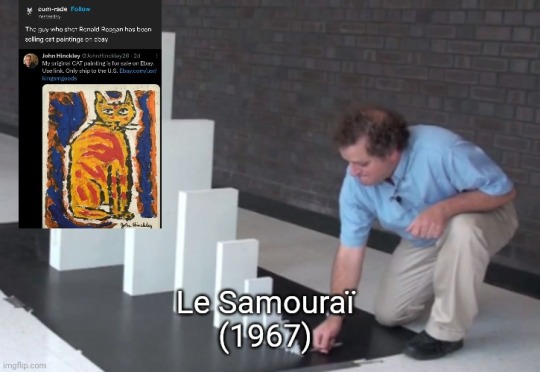
The impact of Le Samouraï (1967) can be traced to the present day and this post by Tumblr user @cum-rade
In this essay I will outline the series of events leading the creation of the above post and the lasting effects of Le Samouraï on modern culture.
Timeline
November 1955 Vietnam War begins
1967(?) Le Samouraï begins production directed by Jean-Pierre Melville
June 1967 A time traveler* burns down the studio attempting to end production
October 1967 Release in the France
1972 dubbed release in the USA titled as The Godson to capitalize from The Godfather's Success
1972 Arthur Bremer's relationship ends, quits his job, plans to assassinate Richard Nixon or George Wallace, and ultimately shoots George Wallace while posing as a supporter and living out of his car
April 1975 Vietnam War ends
1975 Paul Schrader writes the script for Taxi Driver, inspired by assassination attempts and Le Samouraï while living out of his car
Summer 1975 Taxi Driver has begun filming
September 1975 Lynette "Squeaky" Fromme of the Manson Cult attempts to assassinate President Gerald Ford
February 1976 Taxis Driver is released staring Robert De Niro, Cybill Shepherd, & (child) Jodie Foster and directed by Martin Scorsese
Break for Taxi Driver Rundown (spoilers)
Robert De Niro plays Travis Bickle a lonely, mentally ill, white, male Vietnam War vet who drives a taxi
Travis thinks the world is a dirty horrible place that somebody should clean up
Travis says the iconic line "We live in a society"*
Travis is infatuated with Betsy (played by Cybill Shepherd)
Travis goes on a few dates with Betsy
Betsy breaks up with Travis because he brings her to a pornographic theater
Travis deletes Facebook, hits the gym, and lawyers guns up
Travis attempts to assassinate a political candidate while posing as a supporter
Travis gets away cleanly
Travis kills a bunch of pimps to save a sex trafficking victim named Iris (played by Jodie Foster)
Travis puts a gun to his head and pulls the trigger
Travis is celebrated as a hero
Timeline Continued
John Hinckley Jr. watches Taxi Driver (1976) at least 15 times
Hinckley becomes infatuated with 14 year old Jodie Foster
1980 Hinckley moves to Connecticut to stalk Jodie Foster
Hinckley emulates The Joker Travis Bickle IRL
October 1980 Hinckley is arrested for illegal possession of a firearm while stalking President Jimmy Carter
Hinckley chooses to support Ronald Reagan
1980 American Gigolo, directed by Paul Schrader is released as the second installment of Schrader's list of movies based on Taxi Driver
January 1981 Reagan becomes president of the USA
March 1981 Hinckley shoots Reagan and several others
1992 Light Sleeper, directed by Paul Schrader is released as the third installment of Schrader's list of movies based on Taxi Driver
1997 Le Samouraï re-release in the USA
2007 The Walker, directed by Paul Schrader is released as the final installment of Schrader's list of movies based on Taxi Driver
2011 Drive inspired by Le Samouraï staring Ryan Gosling is released
That greentext where Anon pretends to be Ryan Gosling's character in Drive takes place
2016 Hinckley is released from psychiatric care
2019 Joker, (which is the same movie as Taxi Driver) is released staring Robert De Niro who's brains are blown out on screen
Joker meme culture captivates lonely males
2020 a ruling allows Hinckley to showcase his artistic work under his own name
2022 all restrictions on Hinckley are lifted
2023 Tumblr user posts about Hinckley's artwork
Le Samouraï is the basis of the Loner Male movie genre and lead to Ronald Reagan being shot. You can continue the legacy of Le Samouraï by missing the point of of the genre. Do toxic masculinity, it's very cool* and you can be just like Arthur Bremer, Travis Bickle, John Hinckley Jr., and Mr. The Joker.
*false
#ronald reagan#film#taxi driver#joker 2019#le samourai#high effort shitpost#masculinity#suicide#sex trafficking#gun violence#slightlyspooky originalpost
13 notes
·
View notes
Text
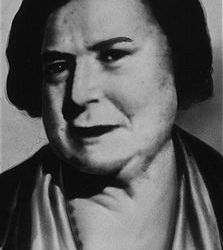
THE BARKER GANG ROB A FEDERAL RESERVE MAIL TRUCK AND KILL A POLICE OFFICER WHILE GETTING AWAY WITH NO MONEY.
August 22, 1933
Image: Ma Barker (Wikimedia Commons)
The infamous Barker gang holds up a Federal Reserve mail truck in Chicago, Illinois, and kills a police officer. After obtaining only a stack of worthless checks, the Barkers returned to a crime with which they had more success—kidnapping. A few months later, the Barkers kidnapped wealthy banker Edward Bremer, demanding $200,000 in ransom.
After Kate Clark married George Barker in 1892, she gave birth to four boys: Herman, Lloyd, Arthur, and Freddie. As Kate became known, Ma Barker was presumably responsible for discipline in the family, but she let her sons run wild. She defended her boys no matter what they did, saying, "If the good people of this town don't like my boys, then the good people know what they can do." All the Barker boys became involved in crime during their childhood: In 1922, Lloyd robbed a post office and received a 25-year sentence in federal prison; that same year, Arthur "Doc" Barker got a life sentence in Oklahoma for killing a night watchman, though later it would turn out that he was innocent; Freddie was next to see the insides of a holding cell after robbing a bank. While serving time in Kansas, Herman committed suicide during a heated gunfight with police after robbing a bank in Missouri.
Herman's death inspired Ma Barker to pressure authorities to release her other sons, and Doc and Freddie were subsequently set free. Although Ma Barker is seen as the gang's mastermind, historians doubt this. Whether she was behind the gang's nefarious deeds or not, the Barkers were at the center of the Midwest's growing criminal community. When they tired of bank robberies, the Barkers began kidnapping.
Their first victim, William Hamm, earned the gang $100,000 in ransom. Although the Bremer abduction in 1933 produced twice as much, it brought them a lot of heat from federal authorities. With the FBI on their trail, Doc and Freddie attempted plastic surgery. But this half-baked idea left them with disfiguring scars, and Doc was captured in early 1935.
Doc, who was later killed while attempting to escape from Alcatraz in 1939, refused to talk to authorities, but police found papers in his hideout that led them to Ma and Freddie on Lake Weir, Florida. After a ferocious shootout lasting 45 minutes, the Barkers lay dead from the firefight, machine guns still at their sides.
Twelve years later, Lloyd Barker was finally paroled. He, too, met a violent end, but not at the hands of the police—his wife shot him dead in 1949. Father George Barker, who was never part of the Barker gang, was the family's sole survivor.
5 notes
·
View notes
Text
Have the (currently living) assassins from Assassins listened to Assassins?:
• Yes: Squeaky Fromme. It is confirmed that she has listened to Assassins and was unimpressed.
• Probably: John Hinkley jr. I don’t know if he has listened to Assassins, but he has a YouTube channel, so there is a good chance he is at least aware of it.
• Maybe: Sara Jane Moore. I mean, she’s had to at least heard of a musical that she is a character in.
The assassins who were only in the book depository scene, aren’t even actually on stage, and had one line each (two of them are still alive so I’m including them as well):
• Maybe: Arthur Bremer. He hypothetically could be aware of the musical, I don’t see why not.
• No: Sirhan Sirhan. It would be truly impressive if he has heard of Assassins given that he is still in prison and has been since 1968.
30 notes
·
View notes
Text

Robert De Niro in Taxi Driver (Martin Scorsese, 1976)
Cast: Robert De Niro, Jodie Foster, Cybill Shepherd, Harvey Keitel, Albert Brooks, Leonard Harris, Peter Boyle. Screenplay: Paul Schrader. Cinematography: Michael Chapman. Art direction: Charles Rosen. Film editing: Tom Rolf, Melvin Shapiro. Music: Bernard Herrmann.
It's a truism that movies and dreams have much in common: We experience them in the dark; we ascribe portents and personal insights to them; they present us with a non-linear experience, in which events don't follow in logical sequence, and point of view is continually shifting. And nobody knows this better than Martin Scorsese, who gives us in Taxi Driver a story that appears to be realistic but which, the more we ponder it, proves to be dreamlike. Take the conclusion of the film, for example: After slaughtering a roomful of brothel patrons and personnel, Travis Bickle (Robert De Niro) attempts suicide but fails, and in a coda we see that he has become a hero, that the 12-year-old prostitute Iris (Jodie Foster) he has tried to rescue has returned to her parents, and that Betsy (Cybill Shepherd), whom he has frightened by stalking, now regards him as a hero, too. It is the most unlikely of "happy endings" in an era that had begun to mock such conventional resolutions. So it's no surprise to find that there are those who think that the entire sequence is a dream, or a fantasy of the dying Travis. Certainly there are things in the sequence that don't entirely jibe with a realistic interpretation, and not just the fact that Scorsese himself is not inclined to anything so square as a happy ending. The news clippings on the wall of Travis's apartment don't look like actual clippings, and the photograph of Travis included with them hardly looks like De Niro. Iris has been adamant about never returning to her parents. And Betsy seems unlikely to warm up to Travis after he shocked her by taking her to a pornographic movie. Scorsese has never endorsed, nor fully repudiated, this interpretation of the ending as a fantasy, but the screenwriter, Paul Schrader, has said that the ending brings the film full-circle, meaning that Travis's murderous loner cycle will begin all over again. I think it better to regard the whole film as a nightmare about contemporary urban loneliness, filtered through what Scorsese knows best: motion pictures. From the moment the saxophone begins playing Bernard Herrmann's theme, we are cast into the mythical realm of the film noir, a genre dear to Scorsese's heart. Cinematographer Michael Chapman turns 1970s New York City into a city of dreadful night, a neon-lighted hell full of smoke and steam, and Scorsese manipulates extras into demonic gatherings. One of the more shocking sequences takes place when Scorsese himself plays a passenger in Travis's cab, making him wait outside an apartment house and watch the silhouette of the passenger's wife on a window shade as she has a meeting with her Black lover. (The passenger uses an uglier word to describe the lover.) But the scene is not shot realistically: It should be clear to even the most naïve movie-watcher that the silhouette has been crafted with special lighting, a kind of distancing device that puts the emphasis on the film as a parable and not as a docudrama. More and more, I come to think of Taxi Driver as Scorsese's greatest film because it makes us not only reflect upon and challenge what movies are doing to us but also because it gives us a sense of modern anomie unequaled in any other film. Travis Bickles are all around us, and in America, with its laxness about weaponry and its emphasis on individual liberty, they continue to appear, whether in the form of Arthur Bremer -- the man who attacked George Wallace, whose diaries De Niro studied while creating Travis Bickle -- or John Hinckley, whose Taxi Driver-colored fantasies drove him to shoot Ronald Reagan to attract Foster's attention, or the next psychopath with a grievance whom we'll learn about after the tragic fact. But Scorsese should not be blamed -- indeed, he and De Niro should be praised as highly as possible -- for bringing Travis to our attention, for taking our nightmare and reprising it for us so effectively.
5 notes
·
View notes
Text

Very late but I had to regain my silly energy
#thinking i will draw jack ruby and boston corbett together since i forgot to include boston in the list#but tbf i only remembered that he would count after seeing him in manhunt#shoutout manhunt monday i am slowly getting thru the series#rays art#arthur bremer#assassination month
4 notes
·
View notes
Photo
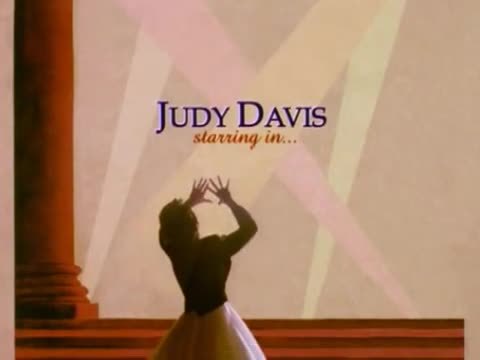
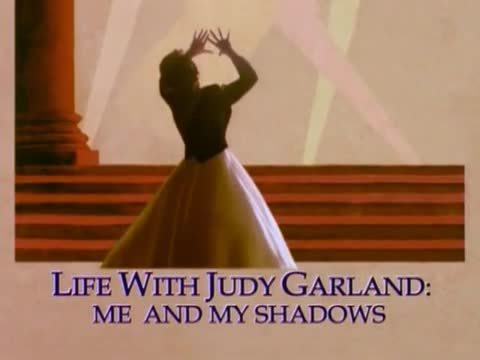

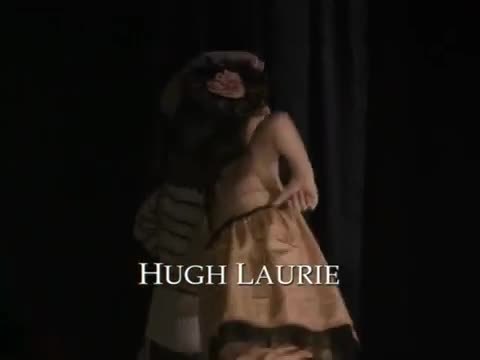

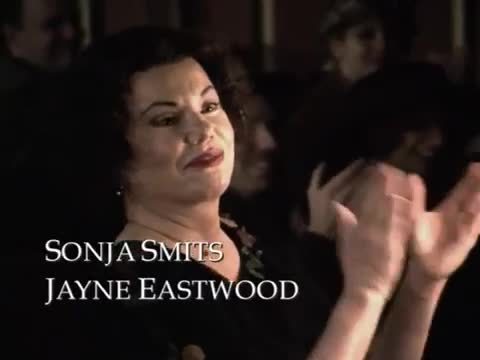

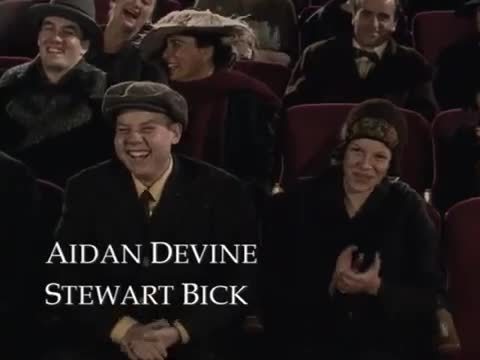
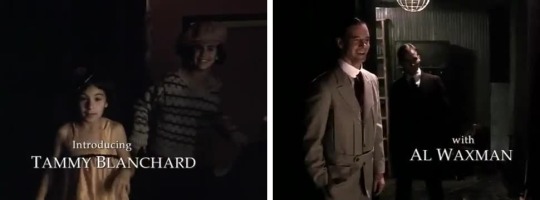
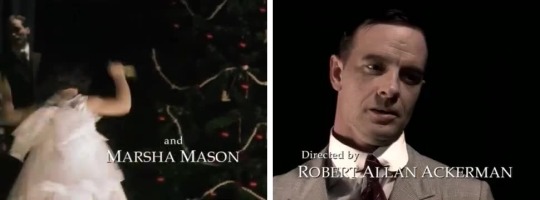
Life With Judy Garland: Me and My Shadows - ABC - February 25 - 26, 2001
Biography (2 episodes)
Running Time: 170 minutes
Stars:
Judy Davis as Judy Garland
Hugh Laurie as Vincente Minnelli
Victor Garber as Sid Luft
John Benjamin Hickey as Roger Edens
Sonja Smits as Kay Thompson
Alison Pill as young Lorna Luft
Aidan Devine as Frank Gumm
Marsha Mason as Ethel Gumm
Lindy Booth as Lana Turner
Al Waxman as Louis B. Mayer
Dwayne Adams as Mickey Rooney
Jayne Eastwood as Lottie
Martin Randez as Mark Herron
Hume Baugh as Mickey Deans
Daniel Kash as Arthur Freed
Stewart Bick as Artie Shaw
Rosemary Dunsmore as Ida Koverman
Cara Pifko as Jimmy Gumm (adult)
Zoe Heath as Suzy Gumm (adult)
Michael Rhoades as Busby Berkeley
Gerry Salsberg as Charles Bickford
Phillip MacKenzie as Victor Fleming
Thea Gill as Lucille Bremer
Noah Henne as The Scarecrow (Ray Bolger)
James Kall as The Tin Man (Jack Haley)
Michael B. King as The Lion (Bert Lahr)
Harrison Kane as Joey Luft (age 7-10)
Brittany Payer as Liza Minnelli (age 1-2)
Rob Smith as David Begelman
Christopher Marren as Freddie Fields
Richard M. Davidson as Jack Warner
Derek Keurvorst as George Cukor
Aron Tager as George Jessel
William Holden as Himself (archive footage)
Grace Kelly as Herself - Academy Award Recipient (archive footage)
Cynthia Gibb as Narrator (older Lorna)
Carley Alves as Judy (age 2)
Tammy Blanchard as Judy (age 12-21)
Amber Metcalfe as Lorna (age 6)
Mackenzie Weiner as Lorna (age 3)
Krista Sutton as Lorna (adult)
Josephine De Cosma as Jimmy Gumm (age 7)
Samantha Gerber as Suzy Gumm (age 9)
Alex House as Joey Luft (age 11-15)
Ellis Turner as Joey Luft (age 4) (uncredited)
Arielle Di Iulio as Liza (age 6-8)
Sarah Moussadji as Liza (age 12-15)
Marie Ward as Liza (age 23)
8 notes
·
View notes
Text
Ronald fucking Reagan WAS almost killed after being hit by a ricochet off the limo door and having the bullet lodge in his chest in March 1981.
Secret Service Agent Tim McCarthy and Reagan Administration Press Secretary James Brady WERE shot directly and actually almost killed in THAT same assassination attempt.
George Wallace was paralyzed when Arthur Bremer tried and failed to assassinate him in May, 1972.
Donald Trump got a slight nick in his ear from a near miss that he and his supporters milked for all it's worth and then some.
This failed attempt on Trump barely registers compared to previous notable attempts in my lifetime.

609 notes
·
View notes
Text
so- Assassinsblr
why does arthur bremer say that his penis made him do it in the book depository scene
what does that mean pls help
3 notes
·
View notes